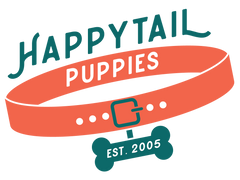
MINIATURE AUSTRALIAN SHEPHERDS PUPPIES
Job-oriented. Athletic.
The Australian Shepherd (also called Aussie, Spanish Shepherd, Pastor Dog, or Bob-Tail) is a smart and loyal companion and a very active dog who you’ll need to keep occupied. The breed was created to herd livestock and is still a working dog breed — they’ll be happiest with a job to do. You may find that they will herd animals and people by barking and sometimes nipping. They need a family that will provide training to curb such behavior, structure, and lots of exercise. Aussies are athletic and excel at dog sports like herding trials, tracking, agility, flyball, tricks, and obedience. They can be a wonderful family companion with consistent training and an understanding of their role in the family.

Temperament
Aussies are smart, athletic, and agile, and they will flourish with appropriate training and hopefully their own job within the pack. They have been known to be talented ranch dogs, guide dogs for the blind and/or hearing impaired, search and rescue dogs, drug-detecting dogs, and therapy dogs.

Appearance
Aussies have weather-resistant double coats that are dense but not long. They will shed their undercoats in spring or summer, and females who haven’t been fixed will shed after each heat cycle.
Their outer coats should be straight, though a slight curl is acceptable, and come in several colors:
- Blue merle
- Black
- Red
- Red Merle

Exercise
You can also keep them busy by teaching new tricks and taking them on long walks. You may find that a fenced yard is important for your Aussie to prevent them from trying to herd cars, kids, and other animals in the neighborhood.
We recommend 90 minutes of activity a day and about 14 miles walking a week.
Though their name might suggest Australian origin, the Australian Shepherd actually originated in the western United States during the 1840s Gold Rush. It’s likely that the breed’s ancestors came to the U.S. through Australia. Basque Europeans are thought to have settled in Australia with their sheepdogs, and when these same people moved to the western United States, of course they brought their dogs along. Bred to herd sheep, they are happiest when they have a job.
The breed enjoyed a surge in popularity when it was used as a trick dog in rodeos and films in the 1950s. Aussies were first registered with the National Stock Dog Registry. The Australian Shepherd Club of America was formed in 1957 and became the largest registry of Australian Shepherds in the U.S. The United States Australian Shepherd Association was founded as an attempt to gain recognition by the American Kennel Club, which finally came in 1993.
Major health concerns to be aware of:
- Cataract
- Progressive Retinal Atrophy
- Hip Dysplasia
- CEA
- Von Willebrand's Disease
Minor health concerns to be aware of:
- Distichiasis
- Deafness
- OCD
- Nasal Solar Dermatitis
- Patent Ductus Arteriosus
Aussies are not hypoallergenic and are average shedders. Maintaining their coat is easy with a natural bristle brush and comb, brushing a couple of times a week. Check carefully for burrs and other debris that can become snagged in their coat when they’re outside. Bathing too much can cause dry skin and hair loss, so only bathe as needed. Their undercoat will shed in spring or summer, and females who haven’t been spayed will shed after each heat cycle. When your Aussie is shedding, you’ll need to groom a bit more often to remove loose hair. Nails should be trimmed every 2–3 weeks. Clear ears weekly to prevent infection.




